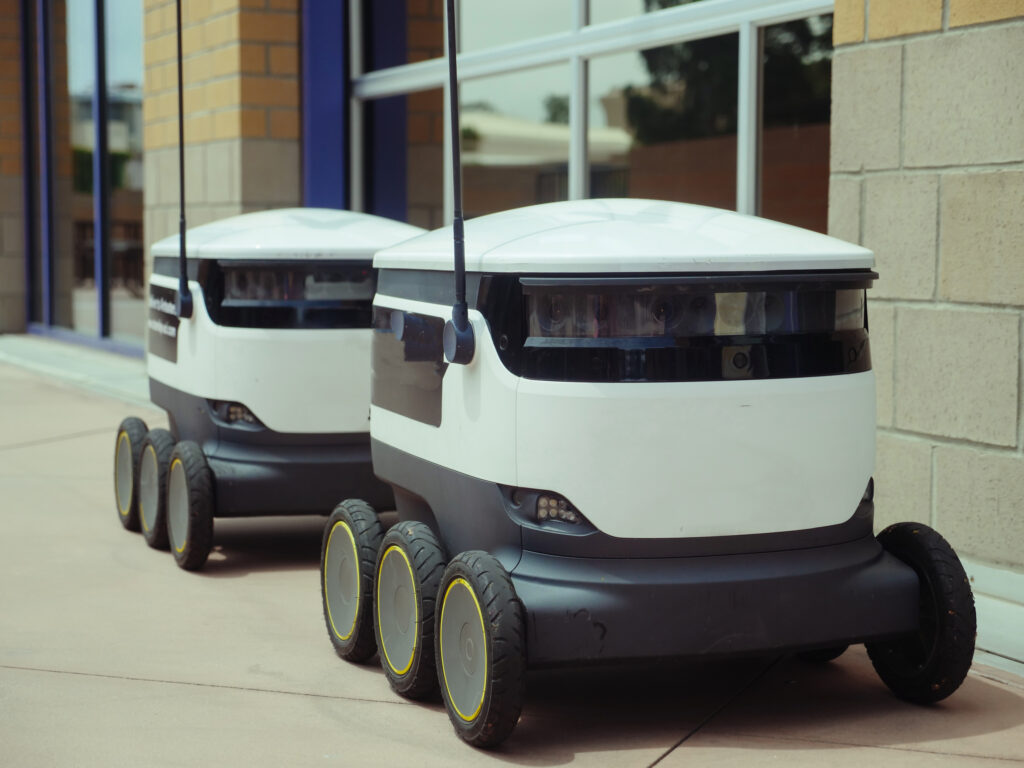Common Methods of Ground Motion for Robotics

Robots are machines that can perform tasks autonomously or semi-autonomously, often in complex or hazardous environments. One of the key aspects of robot design is how the robot moves, or its locomotion. In this blog post, we will explore some of the main methods of motion for robots, and discuss some examples, pros, and cons of each.

Wheeled robots
One of the most common and simple methods of motion for robots is using wheels. Wheeled robots can have different configurations, such as two, three, four, or more wheels, and different types of wheels, such as fixed, steerable, or omnidirectional. Wheeled robots are typically fast, stable, and energy-efficient, and can navigate on smooth and flat surfaces. However, wheeled robots have some limitations, such as difficulty in climbing stairs, crossing obstacles, or traversing rough terrain.
Examples of wheeled robots include:
- Roomba: a popular household robot that vacuums the floor using two drive wheels and a caster wheel.
- Curiosity: a NASA rover that explores the surface of Mars using six wheels with independent suspension and steering.
- Segway: a personal transporter that balances on two parallel wheels and uses gyroscopes and tilt sensors to control speed and direction.
Legged robots
Another method of motion for robots is using legs. Legged robots can have different numbers of legs, such as two (bipedal), four (quadrupedal), six (hexapodal), or more. Legged robots can mimic the natural locomotion of animals or humans, and can adapt to different terrains and environments. Legged robots can also perform tasks that require balance, agility, or manipulation, such as jumping, running, or climbing. However, legged robots are also more complex, unstable, and energy-consuming than wheeled robots, and require sophisticated control algorithms and sensors to coordinate their movements.
Examples of legged robots include:
- Atlas: a humanoid robot developed by Boston Dynamics that can walk bipedally, carry objects, and perform acrobatic feats.
- Spot: a dog-like robot developed by Boston Dynamics that can walk quadrupedally, navigate obstacles, and perform various tasks.
- Hexbug: a toy robot that mimics the behavior of insects using six legs and a simple vibration motor.
Tracked robots
A third method of motion for robots is using tracks. Tracked robots have continuous belts that wrap around wheels or sprockets, and provide traction and stability on uneven or slippery surfaces. Tracked robots can also climb over obstacles or gaps that are smaller than their track length. Tracked robots are often used for military or industrial applications, such as bomb disposal, reconnaissance, or mining. However, tracked robots are also noisy, heavy, and prone to wear and tear.
Examples of tracked robots include:
- iRobot PackBot: a versatile robot that can perform various missions using tracks and a manipulator arm.
- Caterpillar 797F: a massive mining truck that uses tracks to haul up to 400 tons of payload.
- Wall-E: a fictional robot from the Pixar movie that uses tracks to collect and compact garbage.